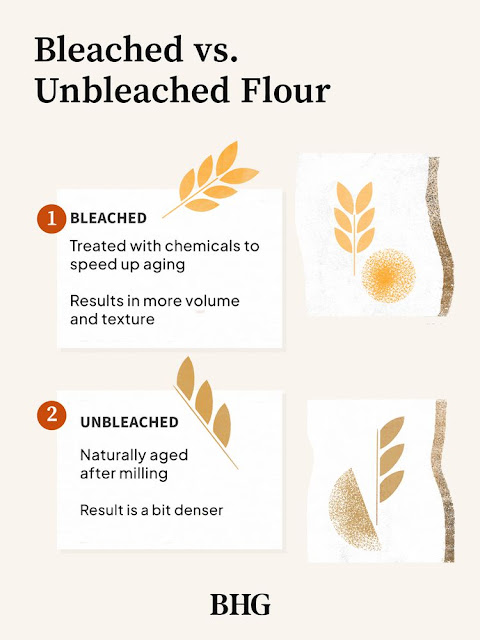Today's Tip-sy Tuesday tip is about the difference between bleached and unbleached flours - I'd never really given this much thought and have bought both without thinking they aren't the same. Here's some info, just FYI:
Bleached and unbleached flour are both milled flour; the difference is how they're produced. All milled flour will bleach, or turn white, on its own when allowed to stand exposed to air (unbleached flour). Because this takes time, bleaching agents such as chlorine dioxide and benzoyl peroxide are added to the flour. The resulting bleached flour is more white in color and has a slightly softer texture. If you're buying unbleached flour, it's just skipped the step of the added chemicals and is naturally aged after milling. Unbleached flour will have more of an off-white or yellow tint that fades into lighter white color as it's exposed to oxygen.
Bleached flour and unbleached flour can be used interchangeably in recipes. However, baked goods made with bleached flour contain proteins that have been altered, which helps in forming gluten bonds when baking. For example, the more glutinous your bread dough is (from using bleached flour), the easier it will be to handle because it's less sticky. The result will also have more volume and texture, whereas a loaf made with unbleached flour might be a bit denser. Those with a sensitive palate may also taste a slight difference if bleached flour is used (due to the chemicals added), but otherwise, the flavor will turn out the same.
found here at bhg.com
3.21.22: large dish microwave cozies
3.21.21: 🔥 week 12
3.21.17: watch Mark from Paul's Photo talk about framing your photos and prints
3.21.16: 2 different bunny cakes for Easter and Spring

No comments:
Post a Comment